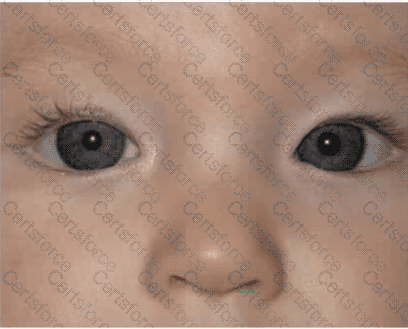A 2.5-year-old boy is brought to the Emergency Department after he consumed a button-shaped battery. Chest and abdomen radiographies are performed. Which one of the following locations mandates urgent removal of the battery?
A 24-year-old woman presents with rapidly increasing lower leg pain. Less than 24 hours ago, she fell off her bicycle and had some minor abrasions. On examination, she is in severe pain and appears anxious. Local examination of her leg reveals mild discoloration with marked tenderness but no swelling in her calf. Which one of the following is the most likely diagnosis?
A 44-year-old woman presents to the office to discuss contraception. During the gynecologic examination, you notice an anterior cystocele to the hymenal ring. The woman denies any bulge symptoms but does report dribbling of urine, especially when she coughs or jogs.
Which one of the following is the best next step?
You are taking over a practice from a retiring family physician. The practice has paper records of patients dating back many years, including records of former patients. Which one of the following organizations is the most appropriate to contact regarding medical record retention requirements?
You are the emergency physician on duty in a rural hospital when heavy rains in the community cause a large landslide. There are multiple casualties expected to arrive in the emergency department. Your colleague has heard about the incident and arrives to help. Which one of the following is the best next step?
A 6-week-old boy is brought to your office by his parents for a follow-up following a recent urinary tract infection. His abdominal ultrasound shows dilated urinary bladder and ureters as well as bilateral hydronephrosis. Which one of the following historical findings would be most helpful in establishing the correct diagnosis?
A 6-year-old boy is brought to the Emergency Department with a 2-day history of a limp. On examination, he looks well, has a temperature of 38 °C and is able to weight-bear. His hip examination reveals mild decreased range of motion. Radiographs of his hip and pelvis show no abnormality. His C-reactive protein level is 8 mg/L (< 6). Which one of the following is the most likely diagnosis?
An 18-month-old boy is brought to the office by his guardians for a well-child visit. His guardians are concerned that his eyes do not look the same. On examination, his eyes appear as shown in the referenced photo.
Which one of the following best represents the patient's condition?

An 84-year-old woman is brought by ambulance to the emergency department after she was found by a neighbour. She had fallen, sustained a hip fracture, and was unable to move for the past 2 days. After starting rehydration, she reports hip pain and numbness and tingling in both her legs. Physical examination reveals faint pulses in both legs and severely swollen lower legs that are painful to palpation. The urine in the Foley catheter bag seems to be darker than normal. Which one of the following is the best next step?
A 60-year-old man has a strong family history of aortic aneurysms. Screening abdominal ultrasonography reveals an incidental <1 cm mass in his left kidney. Computed tomography confirms that the mass is consistent with renal adenocarcinoma. Which one of the following is the most appropriate step in management?